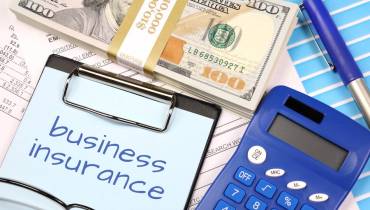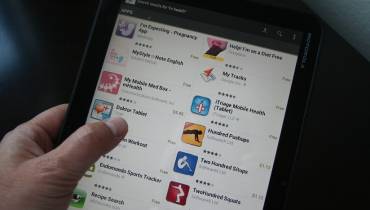What Every Copywriter Needs to Know About the Buyer's Journey

The Internet has forever altered the way we conduct business. For one, you're essentially in competition with every other business on earth. Customers have more options than they've ever had before, and they're taking advantage of that fact.
Studies show 85% of consumers research a product online before making a purchase, according to Saleslion. That's true of both online as well as physical retail.
Considering that 67% of a buyer's decision-making process is now conducted digitally, how do you reach your customers with the information you're wanting them to see?
That's where copywriting comes in.
A Copywriter's Guide to Navigating the Buyer's Journey
In this post, we'll explore and help you understand the buyer's journey. Then, we're going to show you how good copywriting can help you guide your customers through the cycle, to maximize your conversions and leave your customers satisfied.
Let's dig into the complicated, convoluted process of the consumer buying process...
What Is the Buyer's Journey?
The hard sell is dead. 78% of consumers prefer to research a product independently online than researching in a store. Only a small percent of customers prefer to talk to a salesperson before making a purchase.
That means you've got to reach your customers with your digital content. You've got to create engaging web content for every stage of the buying process. That's why it's so essential to understand the buyer's journey.
Main Stages of the Buyer's Journey
The buyer's journey consists of three main stages:
I. Awareness
The first stage of the inbound journey is someone becoming aware of your company's existence. They've most likely just become aware of an issue that needs solving. Your digital content lets them know you have a solution to their problem.
They're most likely not looking to make a purchase during the Awareness stage. They're just doing their research and considering their options. Having sales content during the Awareness stage is a mistake that could potentially alienate potential customers.
Your main goal, during the Awareness stage, should be establishing yourself as an authority in your industry. You're also building a relationship with your customer so they'll think of you when they're ready to make a purchase.
Some questions you should ask yourself during the awareness stage include:
- What are your customer's problems and pain points?
- What are they researching to solve that problem?
- What are some misconceptions they might have about their problems?
- How do they decide which business goal they should pursue?
Asking yourself these questions will help you put yourself in your customer's shoes. It will yield invaluable insights for your inbound marketing content.
II. Consideration
Your customers are beginning to consider their options and getting ready to make a purchase during the Consideration stage. You should start introducing sales content at this stage of the buyer's journey. You'll also want to solidify your relationship with your customers as they're beginning to reach the end of the buying decision process.
Some questions to ask yourself to help relate to customers in the Consideration phase include:
- What solutions are they considering?
- What impact would not making a decision have?
- How are they weighing pros and cons?
- How do your customers decide which product is right for them?
Spending some time with these questions will help you relate to your customers. It will also help you come up with specific keywords and phrases that they might be looking up in the search engine. These insights will be invaluable when you begin creating copywriting in earnest.
III. Decision
Your customers are finally ready to part with their cash when they've reached the Decision stage of the buyer's cycle. This is the point where you should begin your hard sell. You'll want to let them know what sets you apart from your competition.
Some things to think about during the Decision stage include:
- What features are they considering to make a decision?
- What sets your company apart from your competition?
- Who's involved in the decision-making process?
- Do they want to try the product before making a purchase?
- Do they need to prepare before purchasing your product or service?
All of these questions will help you zero in on your customers' unique pain points. All of these insights will inform your copywriting.
Now let's take a look at how you can use copywriting to help steer your customers through the stages of their buying journey.
How to Use Copywriting to Navigate the Buyer's Cycle

Now that we understand the various phases of the consumer buying process, it's easier to conceptualize how the pieces fit together. All of these pieces working together to yield actual sales is known as your sales funnel. Copywriting is how you help guide your customers through the various stages.
Let's take a look at the stages of the buyer's journey and the role that copywriting plays in each.
1. Role of Copywriting in the Awareness Stage
Customers aren't looking to make a purchase during the first stage of the buyer's journey. They're looking to be educated and informed.
You should keep two main factors in mind when creating content for the Awareness stage of the buyer's cycle. You should know your industry. You should also know your customers and the unique things that make them tick.
You should begin your copywriting project by constructing buyer's personas. The more accurate they are, the more relevant your content will be. Bonus points if you base your buyer personas off of actual marketing data.
To create the most effective buyer's personas, consider:
- Age
- Gender
- Salary
- Location
- Goals
- Fears
Your customers' demographics will impact everything from the tone of your copywriting to when you publish content. Housewives sign online at different times than a CFO, for instance.
CFOs might be more persuaded by stats, graphs, and charts, for instance. Housewives might be more moved by customer testimonials or human interest stories.
You should also be researching your industry during the Awareness stage. Look at your competitors and what kind of content they're producing. You should also be keeping up with the latest trends in your field.
All of these insights offer ideas for content to create for the Awareness stage. You'll show up in the search engines, for one thing. Your customers will begin to trust you as an authority in your field, as well.
2. Role of Copywriting In the Consideration Stage
Your customers are zeroing in on a solution by the time they reach the Consideration phase. By this stage, things are becoming simpler.
Your customers are thinking about their problems. You're addressing why your company is the best solution to their issues.
This is generally not accomplished in a single visit.
One important aspect of copywriting for the Consideration stage is encouraging your audience to come back often. There are a few ways you could go about this.
The inbound marketing philosophy would be to create content addressing concerns pertaining to your customers unique problems. Writing thoughtful content about issues plaguing your industry is one way to reach customers further along in the buyer's journey.
You should include CTAs asking your customers to sign up for your newsletter or follow you on social media in this content.
Another approach would be to offer incentives to encourage them to sign up for mailing list. eBooks, whitepapers, and studies are some common incentives that companies offer in exchange for a customer's email address.
3. Role of Copywriting in the Buying Decision Phase
Your customers are finally nearing the end of their buyer's journey. They're getting ready to make a purchase. This is the point when you should roll out the hard selling techniques, leaving them with no doubt your company's the best choice for the job.
Email marketing is an important part of the Decision stage of the buyer's cycle. According to Campaign Monitor, every dollar spent on email marketing yields a $38 ROI.
Your customers have already indicated their interest during the Consideration stage. Signing up for your newsletter or mailing list lets you know they're considering your company for their issues. You need to convince them you're the best choice for their unique needs.
Customization and personalization are an important part of that process. Something as simple as addressing your email marketing to them, by name, can make a massive difference in yielding actual conversions.
You might consider asking them to fill out a short survey in exchange for some form of exclusive content, as another idea. Find out what their exact problems are. Then you can address how your product will solve those issues.
When handled correctly, your sales funnel can become an automated marketing machine. It will yield you new leads and a steady flow of potential customers from all over the world.
Want to Learn More About Writing for the Web?
That's great! Despite the fact that the internet basically drives the business world at this point, too many people don't yet realize the power of excellent writing.
Whether you're looking to help steer people through the buyer's journey or simply looking to create the most viral content imaginable, Web Writer Spotlight is here to help you craft powerful, compelling digital content that grow your business.




















